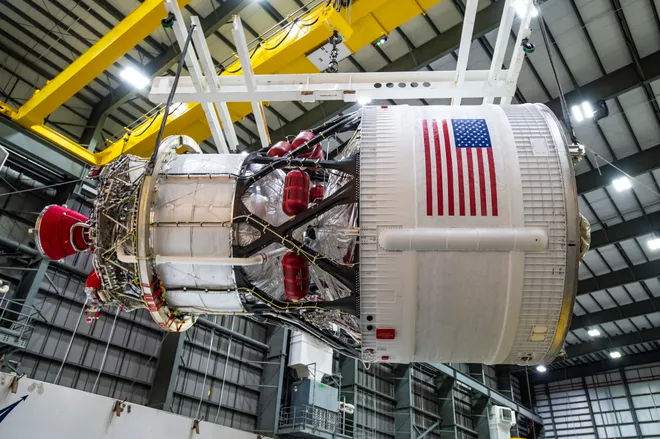Here's why NASA's mission to put humans back on the moon likely won't happen on time
Astronauts probably won't be returning to the moon's surface as soon as NASA would have hoped.
The space agency's Artemis program, formed in 2017, represents NASA's interest in re-establishing crewed lunar missions for the first time in more than 50 years. While a four-member crew is slated to venture in a rocket around the moon next year, NASA had hoped to put astronauts back on its surface in 2025.
But that ambitious Artemis III mission may not be able to reach that goal, a new report from the U.S. Government Accountability Office has found. In fact, it's "unlikely" the moon landing will be able to occur before 2027, according to the report, which was released Thursday.
"NASA and its contractors made progress since our last report on the Artemis missions, but they are still facing challenges," the agency said in a statement.

Orbiting in tandem:Astronomers discover rare sight of 6 planets orbiting star in 'pristine configuration'
What are the Artemis missions?
NASA had planned for 2025 to be the year that American astronauts set foot on the moon's surface for the first time since the last Apollo mission in 1972.
The agency's Artemis program began last year when NASA performed a 26-day test flight of an uncrewed Orion spacecraft – the only spacecraft capable of returning crews to Earth – to test its heat shield under extreme reentry conditions.
Next year, a different crew of three Americans and one Canadian are set to embark on Artemis II for a 10-day journey spanning 600,000 miles to the moon and back. Their main purpose is to test the capabilities of NASA's Space Launch System rocket and a crewed Orion spacecraft needed for deep space exploration.
When the Artemis III crew launches, they are intended to land at the moon's south polar region, where they will stay for about one week. Ultimately, NASA hopes to establish a permanent human presence on and around the moon to serve as a base of operations for future missions to Mars.
Delayed flight tests, space suit redesign, may delay ambitious launch goal
But NASA's timeline for the Artemis III mission might not be as feasible as the agency had hoped, the GAO report found.
Delayed flight tests and challenges with the development of the human landing system and space suits have all hampered NASA's schedule for launch, according to the GAO.
What's more, most NASA missions take more than seven years to develop, even when they don't involve human spaceflight. But the GAO said the space agency aims to complete its development for Artemis III in an ambitious 6½ years.
"The complexity of human spaceflight suggests that it is unrealistic to expect the program to complete development more than a year faster than the average for NASA major projects," the GAO said, adding that a 2027 target window is much more feasible.
The Artemis III already saw a setback in April when Elon Musk's SpaceX Starship rocket exploded about four minutes after launch, breaking apart in a fiery explosion over the Gulf of Mexico.
NASA had awarded SpaceX a $2.9 billion contract in 2021 to develop the first commercial human lander that will ferry the two American astronauts from orbit to the lunar surface.
While Musk still considered the mission a success since the main goal was for the rocket's engines to ignite and for the vehicle to clear the tower, the GAO said much work remains to be done. That includes developing the ability to store and transfer propellant while in orbit, according to the report.
The GAO also found issues with the development of modernized space suits, work that NASA contracted to Houston-based Axiom Space. The company told the GAO that a redesign may be needed after NASA's original design did not provide the minimum required amount of emergency life support for the astronauts.

Eric Lagatta covers breaking and trending news for USA TODAY. Reach him at elagatta@gannett.com
Disclaimer: The copyright of this article belongs to the original author. Reposting this article is solely for the purpose of information dissemination and does not constitute any investment advice. If there is any infringement, please contact us immediately. We will make corrections or deletions as necessary. Thank you.





